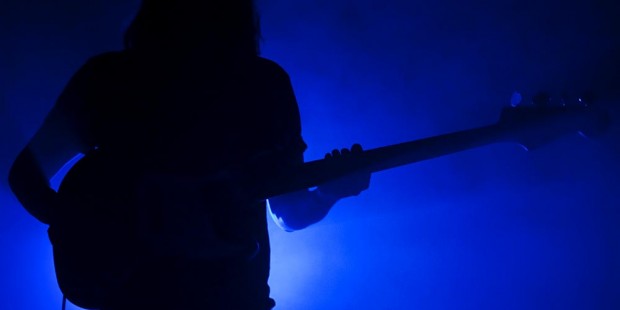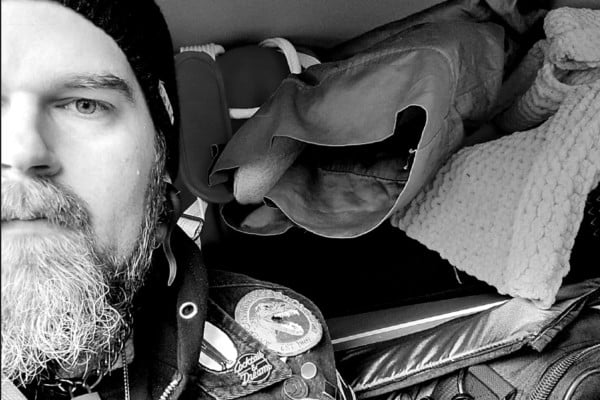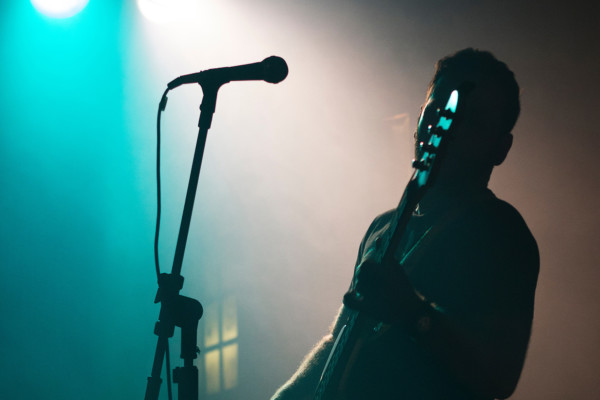The Light Bulb Moment: Men In Black and Anonymity on the Gig

Another rehearsal called for 5:30pm. If it were my band, I’d wait until 7:00 so that no one would fall victim to rush hour traffic. But it’s never my band, so, 5:30 it is.
As expected, I-40 was jammed in both directions and the guitar player’s GPS took him to the wrong house. We started twenty minutes late, but considering the fact that we were all hired guns who had never played together before, the rehearsal went well. We worked on some pushes, designated solo sections, and decided to vamp out on the last song. The artist was happy, the show would go well, and the drummer had plenty of time to get to his next gig. As we began packing up, it was time to go over details: load in at 8, quick sound-check, play at 9. We’ve all been tagged in an Instagram photo to document the productive rehearsal and promote the show. Oh yeah, and we should all wear black.
The next day, I opened my superman closet of dark clothing and sifted through all of the options. There were the t-shirts – crew neck, v-neck, with pocket, without, “cool label” shirts, tight fitting, loose fitting, and long sleeved. And then the button-downs, blouses, and henleys, shiny-material, sequin, lightly patterned, and faded. New jeans, old jeans, and slacks. Black, charcoal, dark and light gray. Time to mix and match.
I’ve often wondered why I have an entire drawer of black t-shirts and yet cannot resist the urge to buy more. I like color, really, I do. But never have I ever been asked to wear yellow to a gig. Black goes with everything, it looks somewhat professional even in the most casual scenarios, and it’s rumored to be slimming. Surely it is impossible to have too many black shirts.
It’s hard to say what triggered this collection of similar, yet slightly different wardrobe options. Perhaps it was an attempt to streamline my morning routine, to ease the decision making process and establish my style. Perhaps it was my deep-seated desire for “form follows function” and the fact that it’s better to load gear and hold a bass for three hours in something comfortable as opposed to something chic.
Or maybe it’s the fact that most gigs require a certain amount of anonymity; a black shirt and jeans gives you permission to slip into the background, draw little attention to yourself, and walk amongst the crowd without any particularly identifiable features. It creates a unified band image and frankly, it’s just cool. Bandleaders, artists, fellow sidemen, and social convention frequently request and dictate black clothing. Bar gig? Cocktail party? Festival? CD release show? Black.
As a hired player, our job is fairly straightforward: learn the music, be prepared, show up on time, wear the right thing, and get along with the other members of the band. We get calls based upon our playing style and professionalism, our performance and personality. Unless we’re in an original band, we’re not the one playing on the record, though we are often expected to execute the music as if we had. Avoid the train wreck, play with expertise, and give the bandleader another reason to call again. We support the music with our playing, the band with our attitude, and the artist with how well we meet their expectations.
When an artist books a show, be it in a coffee shop, a living room, a 500-person venue, or an arena, the focus is on them. It’s their name on the bill, their job to captivate the audience, their face associated with the music. Sidemen are often interchangeable, lucky to receive an introduction on stage, and expected to look cool enough to be in the band without diminishing the attention paid to the artist.
To quote Agent K, “We’re they. We’re them. We are the Men in Black.”
We don’t have to deal with excessive amounts of fame and attention; we can retire without signing autographs or shaking hands. We can jump from project to project, learning songs for the next gig on the books or preparing for a recording session with a new artist. We have the freedom to sneak away but are at the mercy of the phone call. If there’s a job to be done and we’re available to do it, then it’s time to suit up, pack the car, and get to work.
Every now and then it’s nice to get some more attention — to receive the introduction or be “the artist” for a day. It’s great knowing that our work is appreciated and that we inspire people with our talent. On those days, maybe it’s okay for us to wear red, or blue, or neon green.
But on all the other days, it’s nice to pick up a black t-shirt, knowing that it’s the suit I prefer to wear.
Ryan Madora is a professional bass player, author, and educator living in Nashville, TN. In addition to touring and session work, she teaches private lessons and masterclasses to students of all levels. Visit her website to learn more!




Well put
And yes, that is the way it works .It’s all in an attitude… Look good,be positive, professional,considerate, respectful,and humble.Oh, and have a good time !!
I identify with the whole black dress thing. I have a whole draw full of black t-shirts, about 5 pairs of black dress pants and dark shirts, even a concert tails tux for symphony gigs. When I found the electric bass of my dreams on eBay, one of the things I got excited about was that it was black. I thought to myself “good, I’ll be able to play it on any gig and not stick out.”
That is the exact story of my life…….
I find myself explaining to mostly everyone outside of the music realm why my wardrobe is very plain. Mostly grays and blacks. Very good article to say the least.